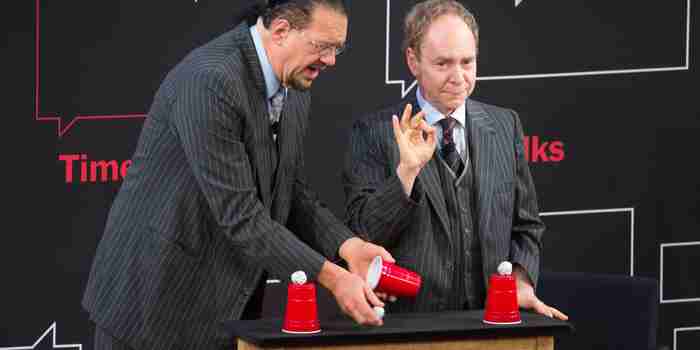From there, word-of-mouth marketing takes on a power of its own. A solid, differentiating “talk trigger” can generate conversations that are passed from person to person year-round. Between 2006 and 2012, the Five Guys chain grew 796 percent, according to research for my latest book, "Talk Triggers." Five Guys’ extra fries are a strategic operational choice factored into menu prices, which makes them the definition of a talk trigger. Why your business needs a talk trigger now more than ever. A 2017 study by Engagement Labs found that 19 percent of consumer purchases in the U.S. are caused by word of mouth, both online and offline. Each time customers tip, they feel good about donating to a good cause -- and spread the word about Lockbusters' generosity. On the other hand, when a talk trigger fits nicely within the customer experience, it can pay dividends for years. Instead of merely featuring the company logo or selling the space as advertising, Graduate Hotels’ keycards are replicas of the college IDs of the local university’s most famous alumni. Talk triggers, on the other hand, are repeatable operational choices that are available to every single customer.
Cultivating a differentiator that’s remarkable, relevant, realistic and repeatable is critical in our hypercompetitive marketplace. From there, word-of-mouth marketing takes on a power of its own.

Opinions expressed by Entrepreneur contributors are their own.
September 18 is National Cheeseburger Day, celebrated with a full complement of coupons and deals — aka excuses to indulge in a cheeseburger (or two). This holiday adds a bit of extra buzz to an ordinary week, and thousands of savvy businesses reap the benefits. But before you know it, it’s Wednesday and National Cheeseburger Day is once again 364 days away.
Nothing against fun calendar additions, but a business doesn’t have to create special events to get people talking about a new product or service. A solid, differentiating “talk trigger” can generate conversations that are passed from person to person year-round. Five Guys knows that.
Between 2006 and 2012, the Five Guys chain grew 796 percent, according to research for my latest book, “Talk Triggers.” This extraordinary growth wasn’t achieved with huge advertising campaigns and special events. Instead, it was fueled by french fries worth talking about.
The Five Guys menu offers a solitary side dish: hand-cut fries. The fry focus starts as soon as you walk through the door and see prominent signage showcasing the location’s potato supplier. But that’s just an appetizer for the chain’s talk trigger. No matter what size a customer orders, an extra, overflowing scoop of fries is always included and almost always elicits a reaction.
The most important takeaway? Getting customers talking about french fries is not a happy accident. Five Guys’ extra fries are a strategic operational choice factored into menu prices, which makes them the definition of a talk trigger.
Why your business needs a talk trigger now more than ever.
An effective talk trigger is a differentiating experience or unique twist on a product that compels customers to tell others about it. It might be the warm cookie when checking into a hotel, the humorous hold music or those extra fries overflowing in the to-go bag. Whatever it is, it’s not a one-off. A talk trigger is carefully crafted and woven into how a company engages each customer, every time.
Triggering word-of-mouth marketing is critical in today’s hypercompetitive, highly personalized marketplace. Not only is word of mouth automatically tailored by the talker to fit the perceived needs of listeners, but it is also independent, which adds to its credibility and persuasiveness.
A 2017 study by Engagement Labs found that 19 percent of consumer purchases in the U.S. are caused by word of mouth, both online and offline. And research conducted by Blanc & Otus and G2 Crowd showed an even greater impact in the business-to-business space due to the higher average prices, longer consideration period and smaller customer pool. Beyond what research can capture, many more purchases are likely substantially influenced by word…

COMMENTS